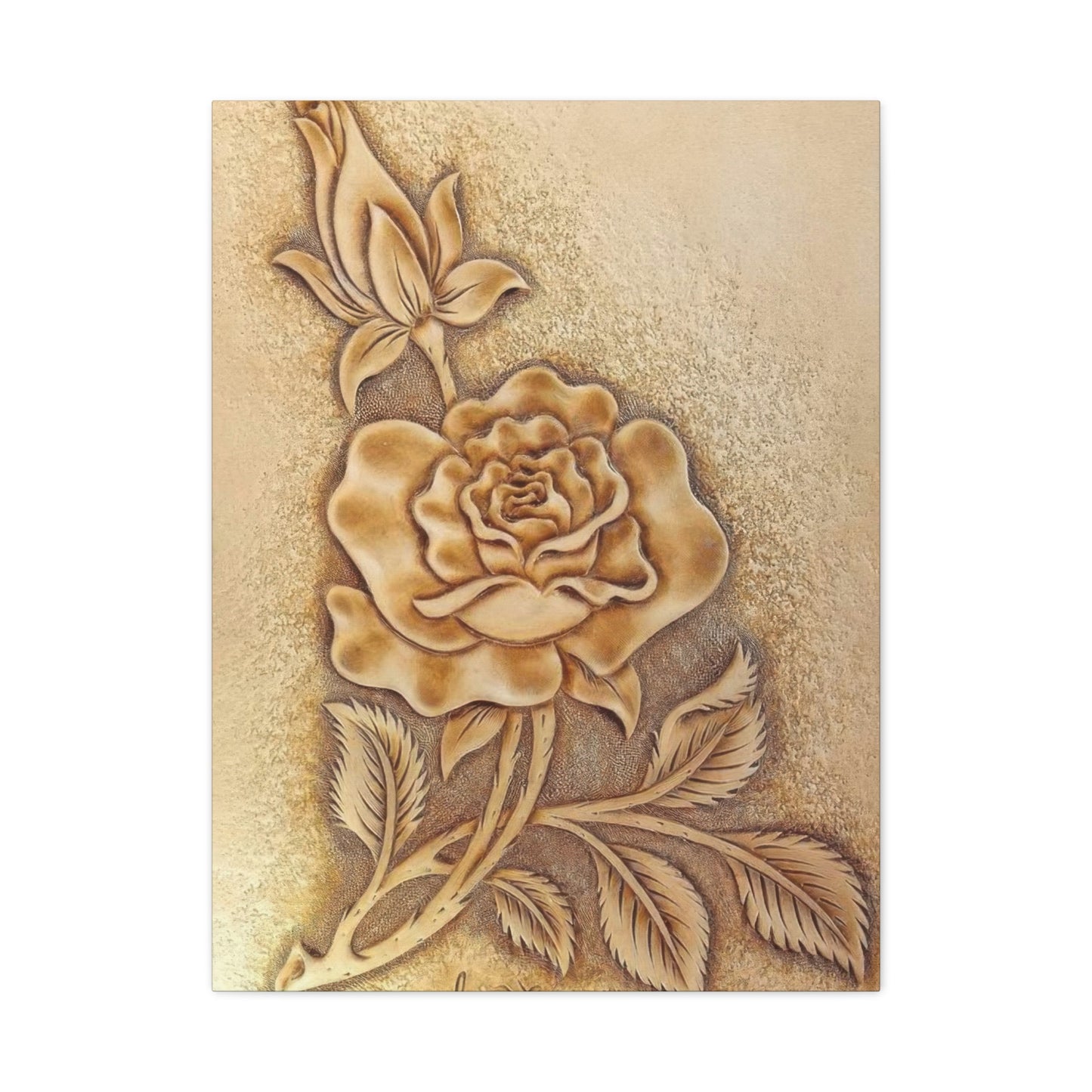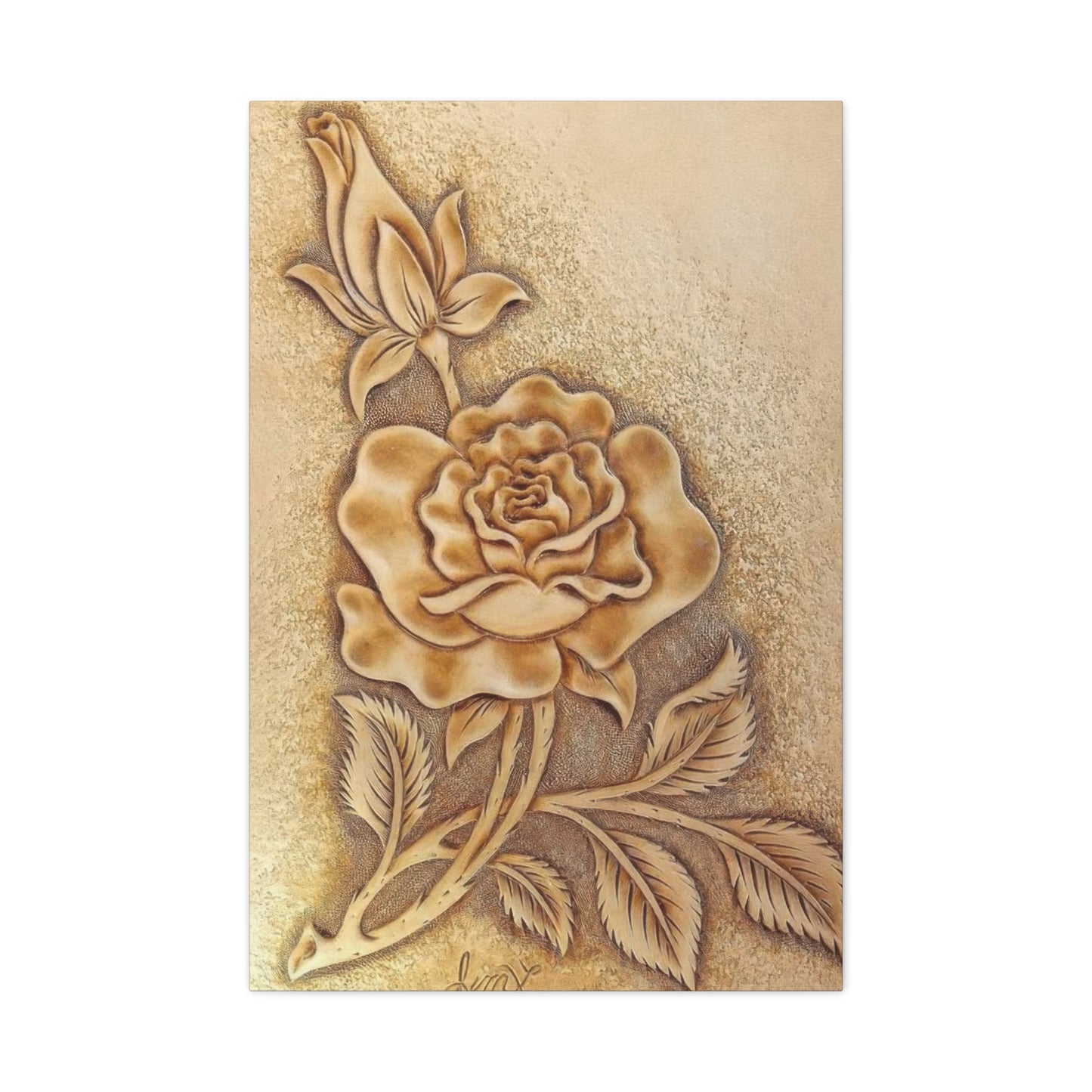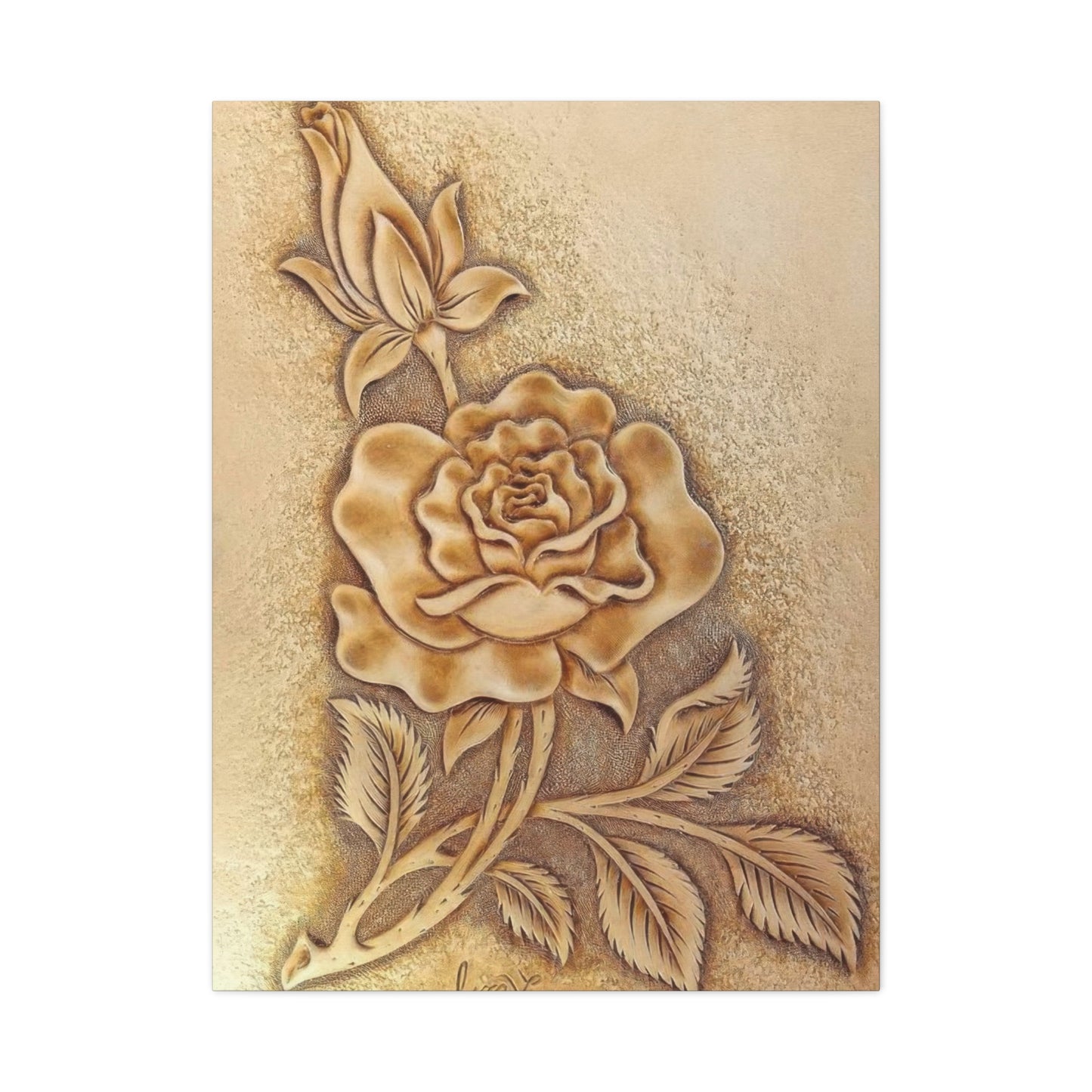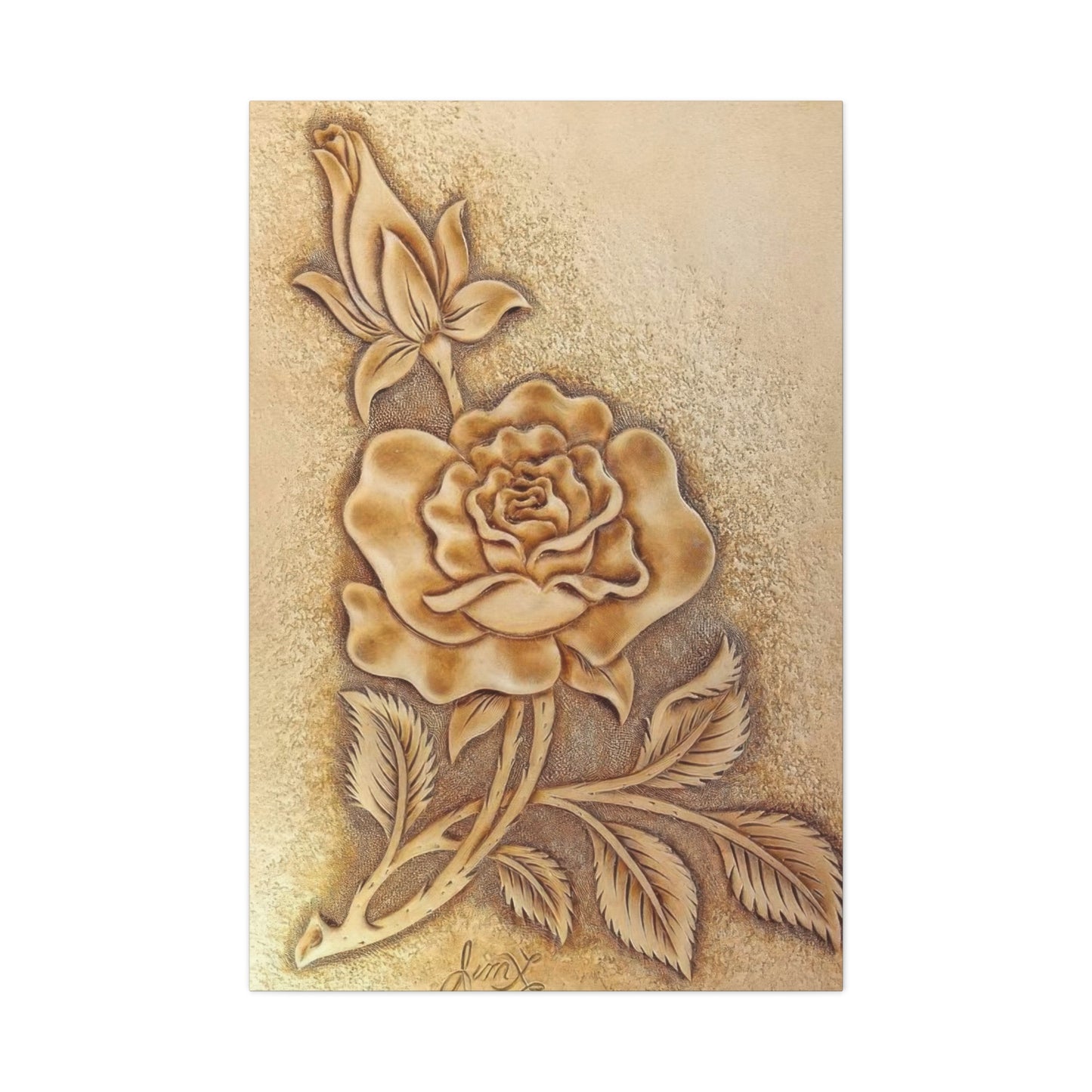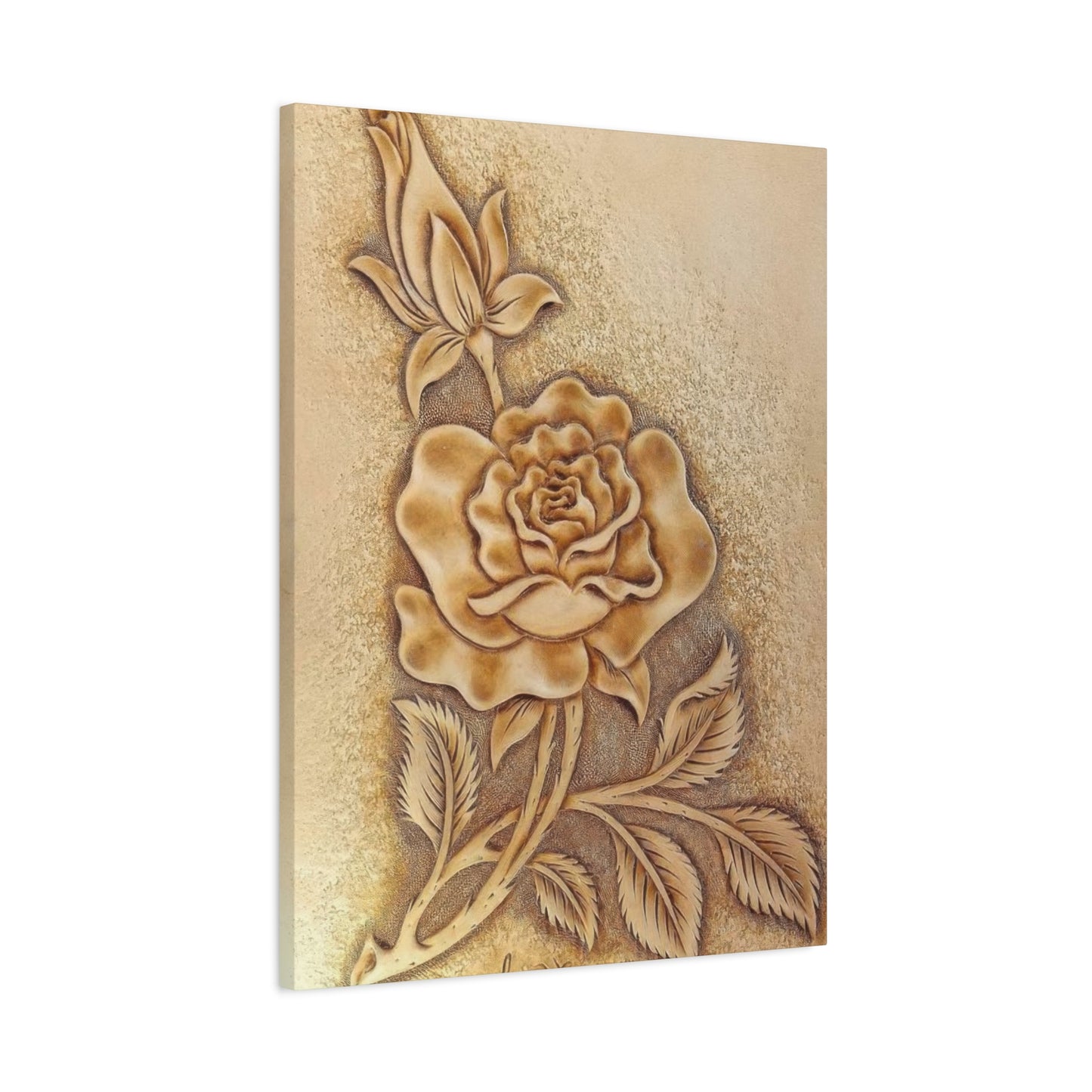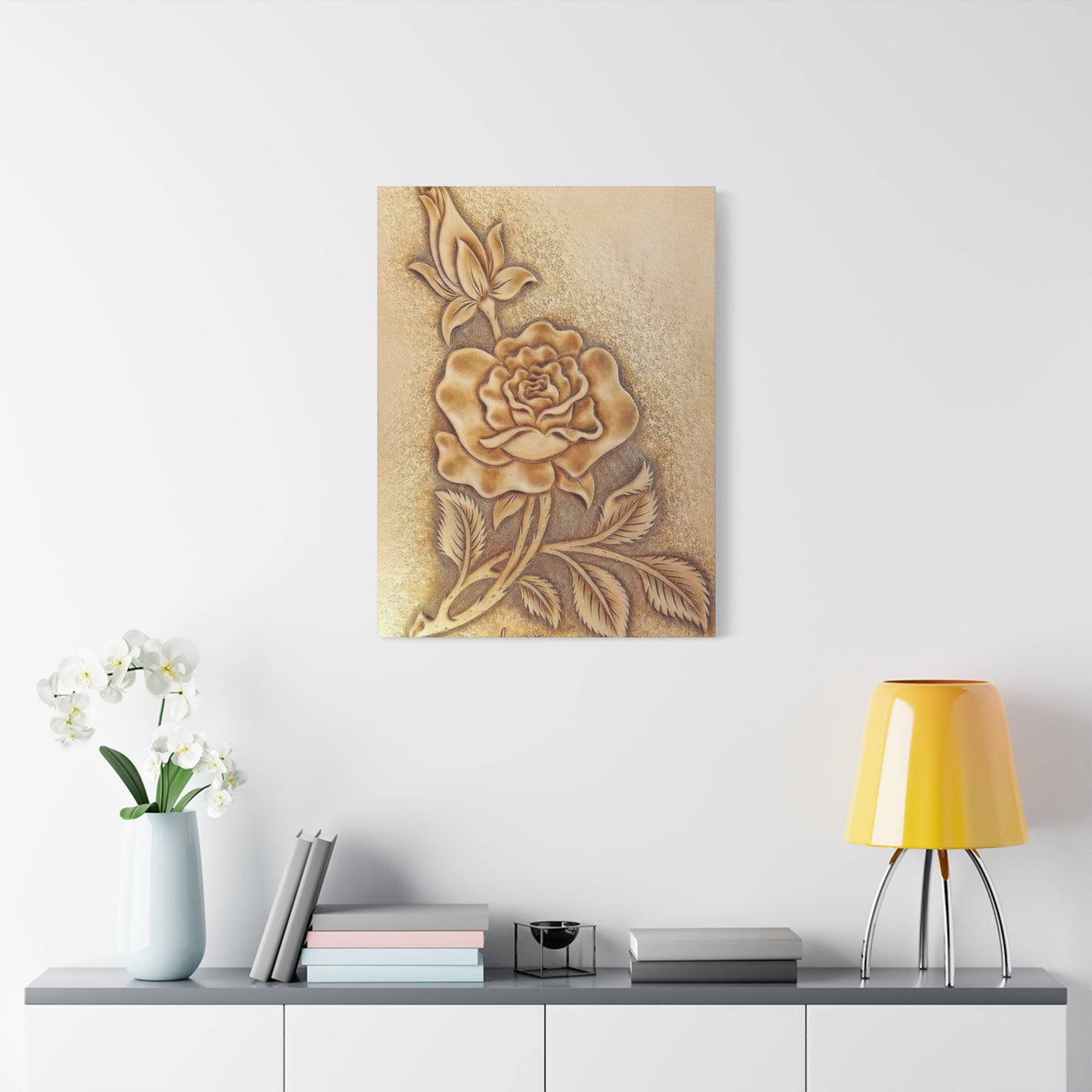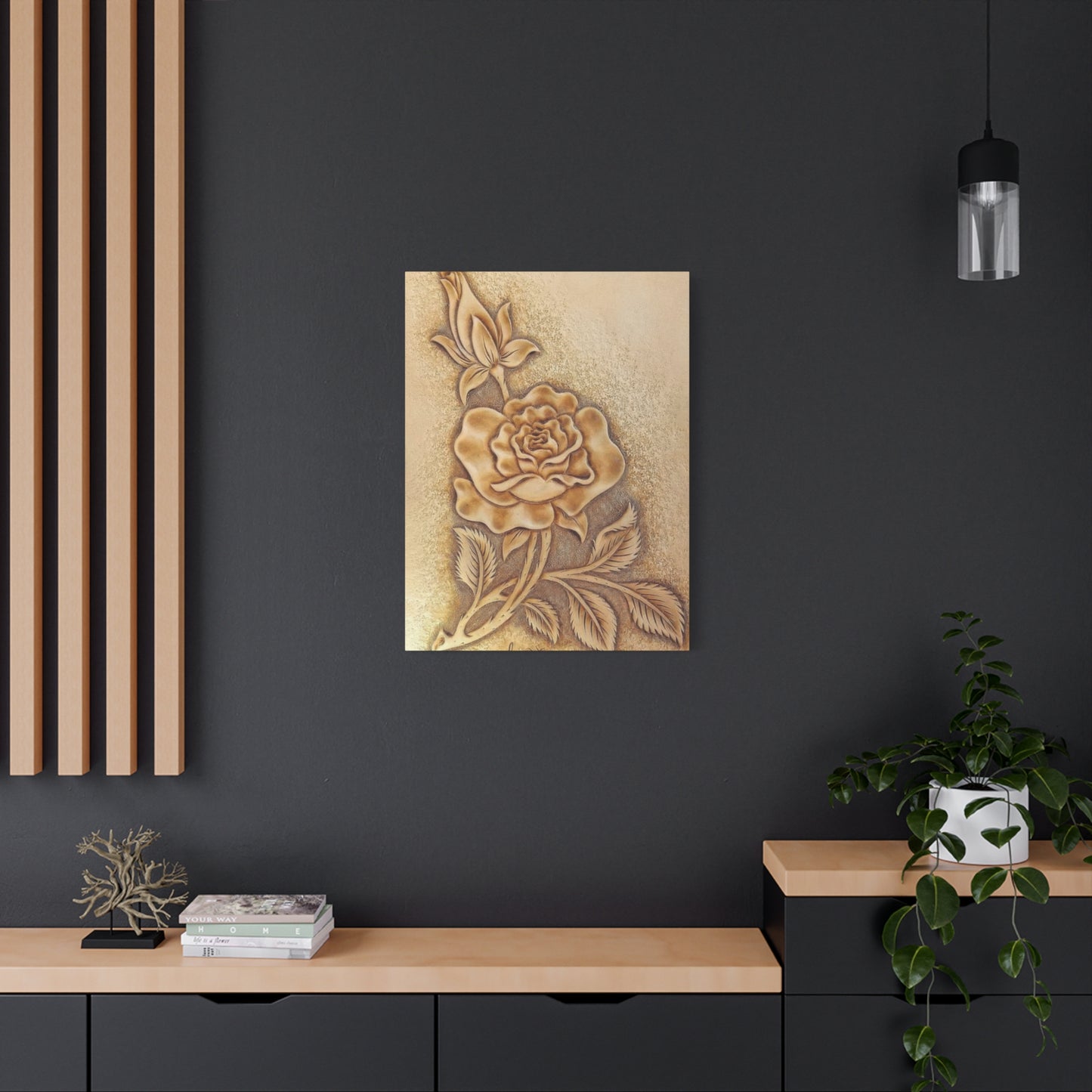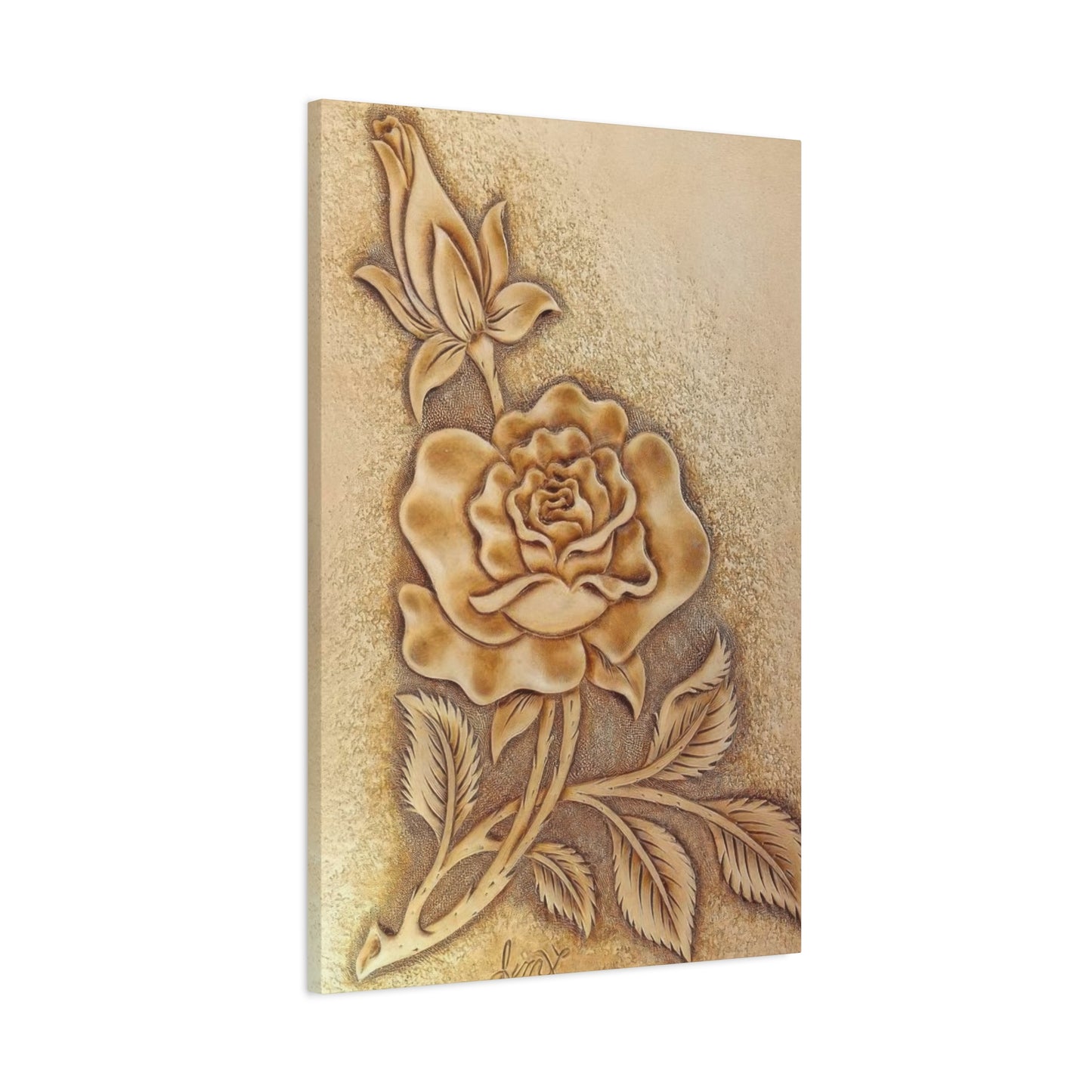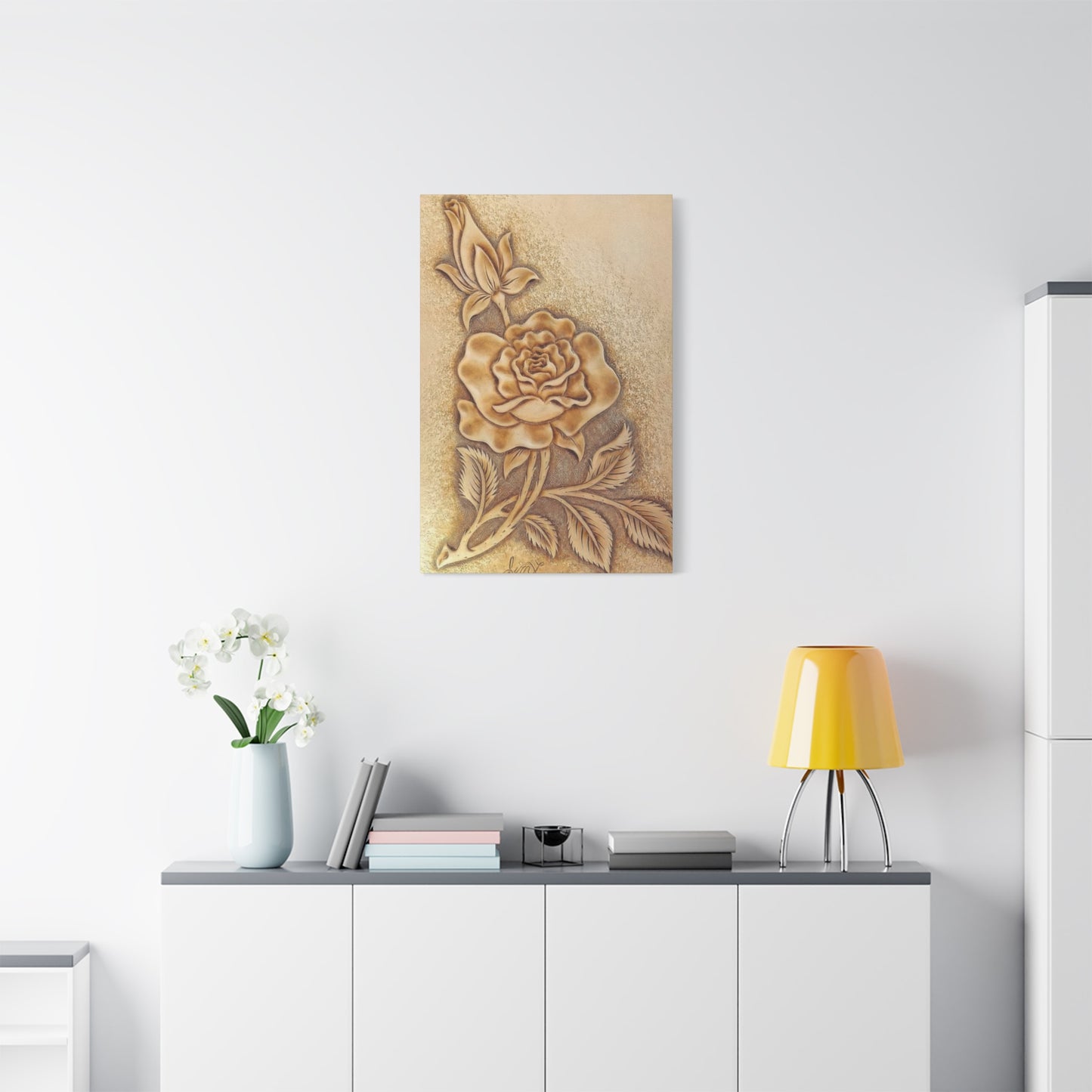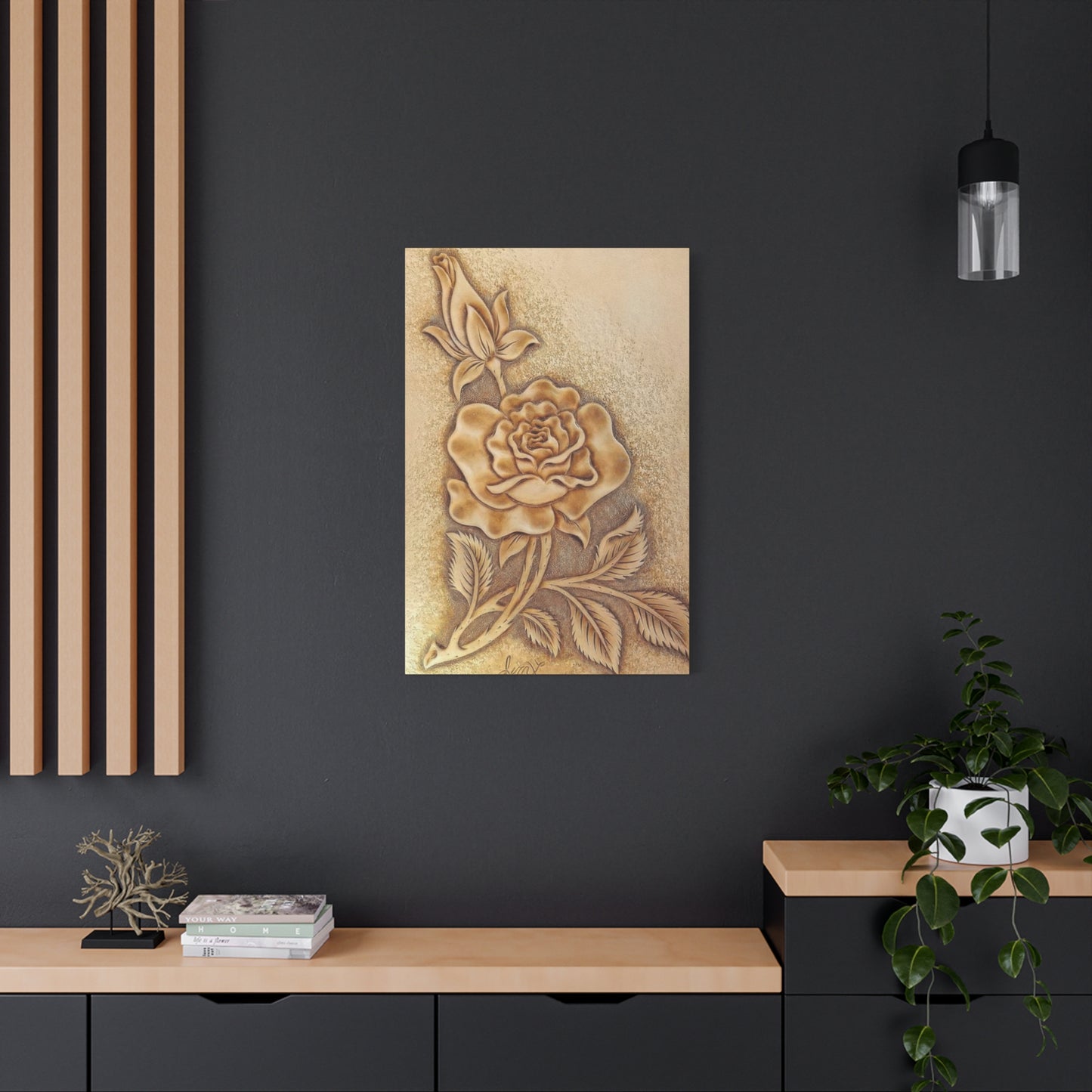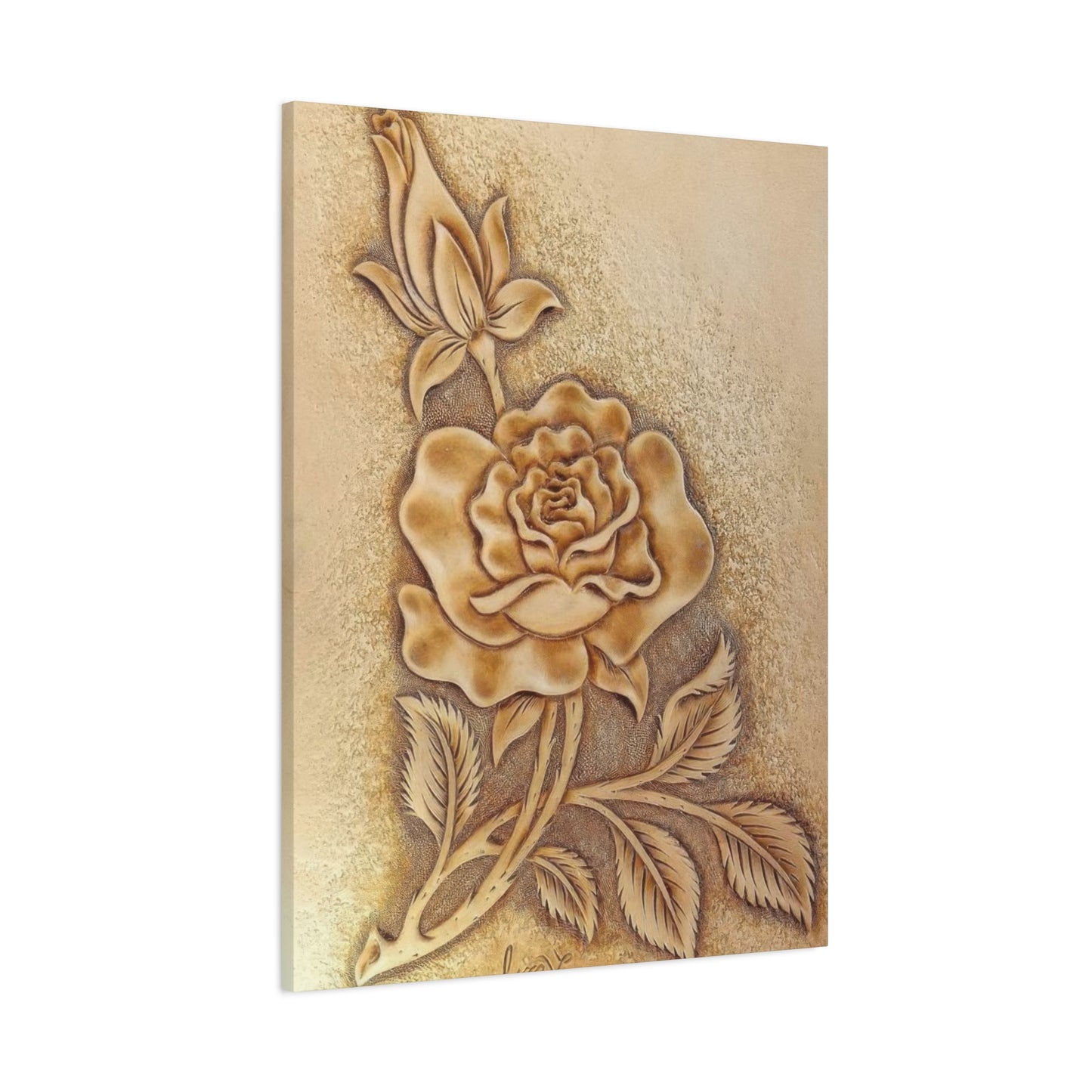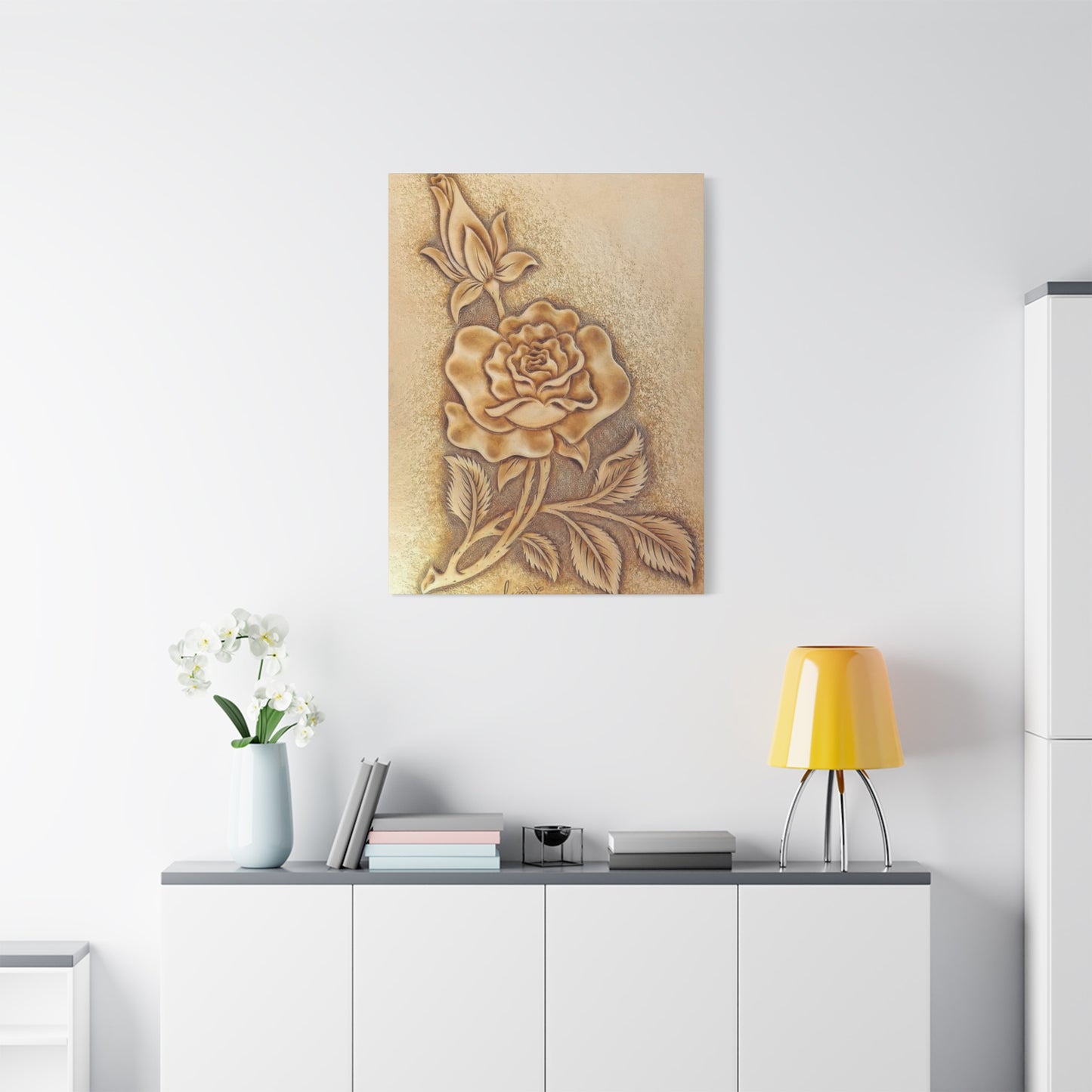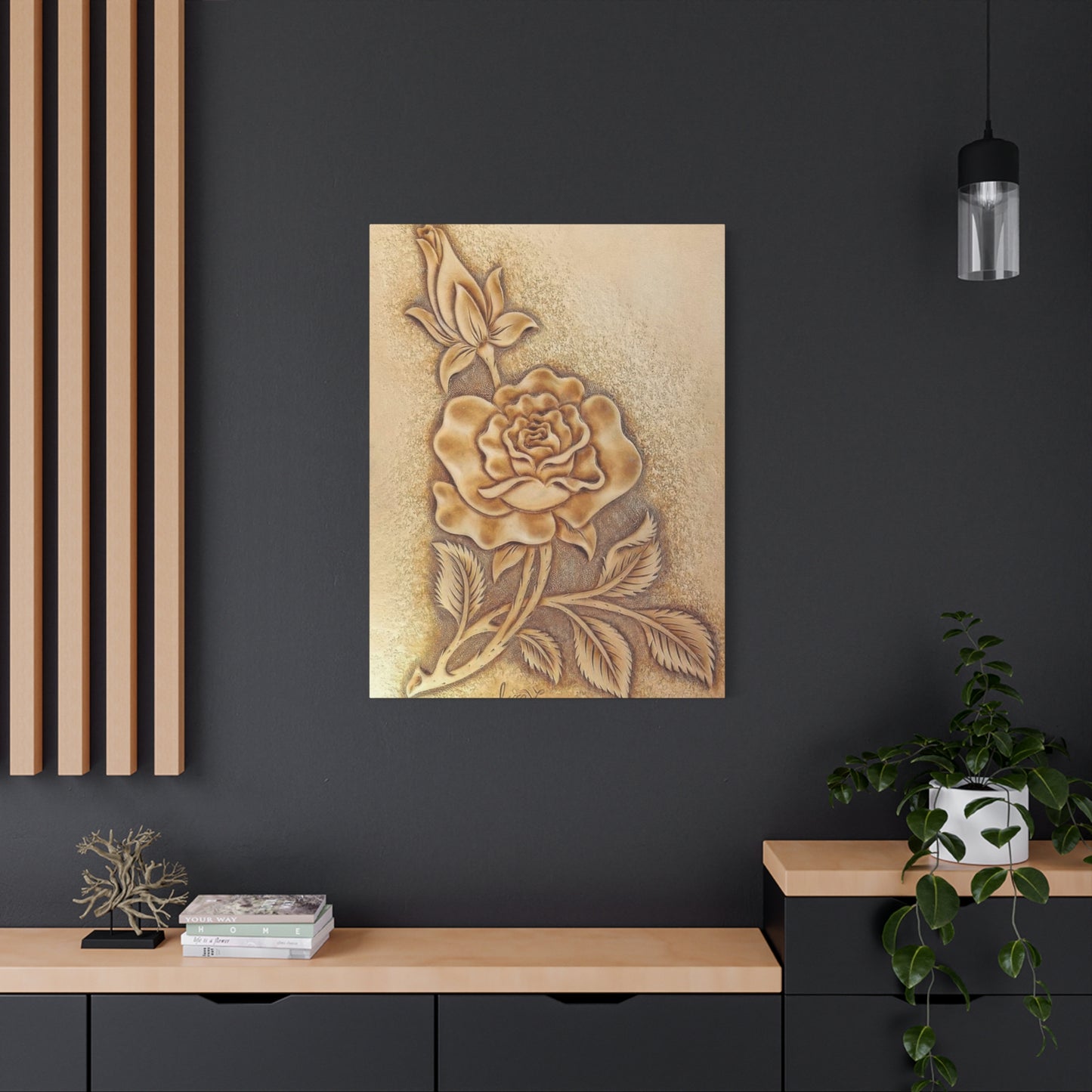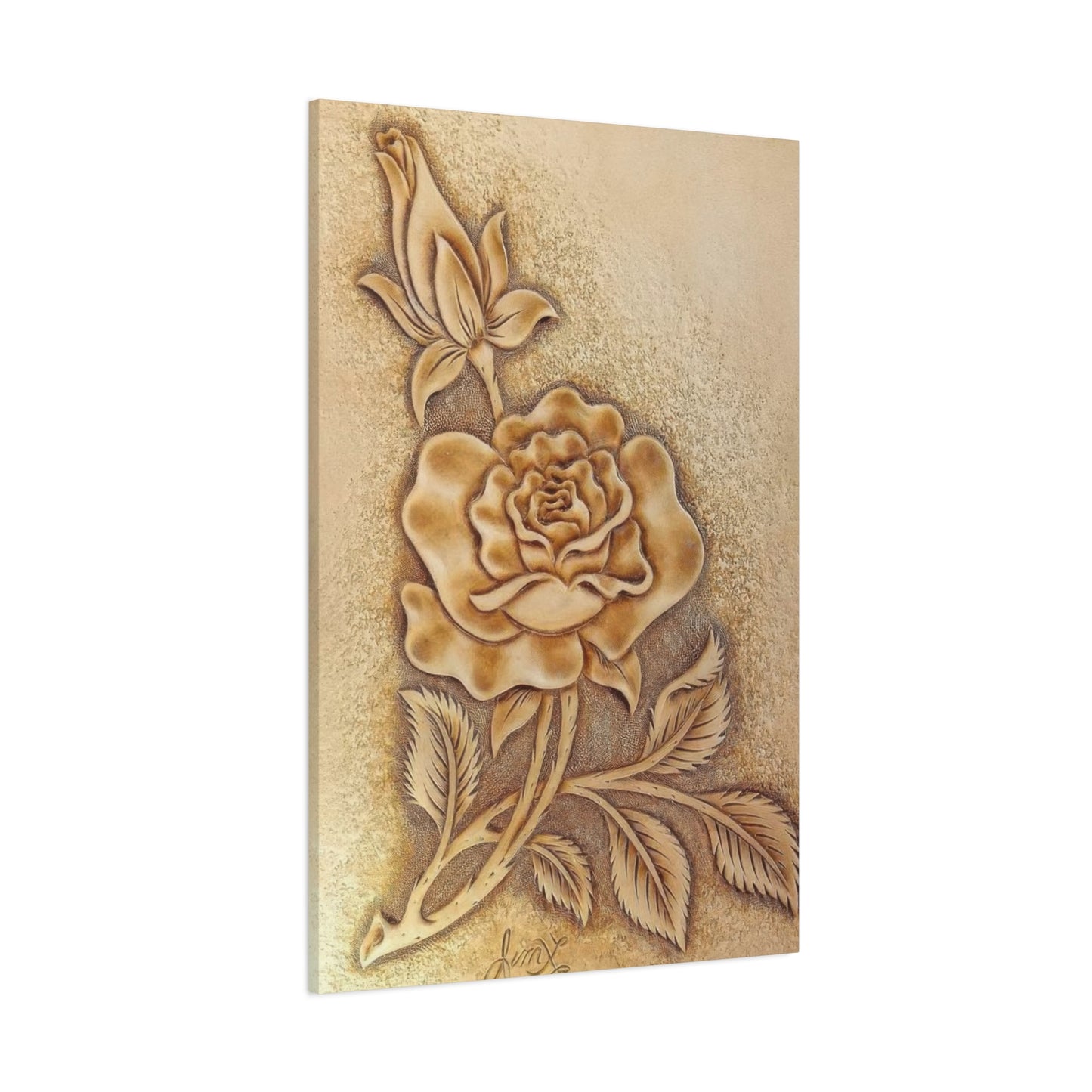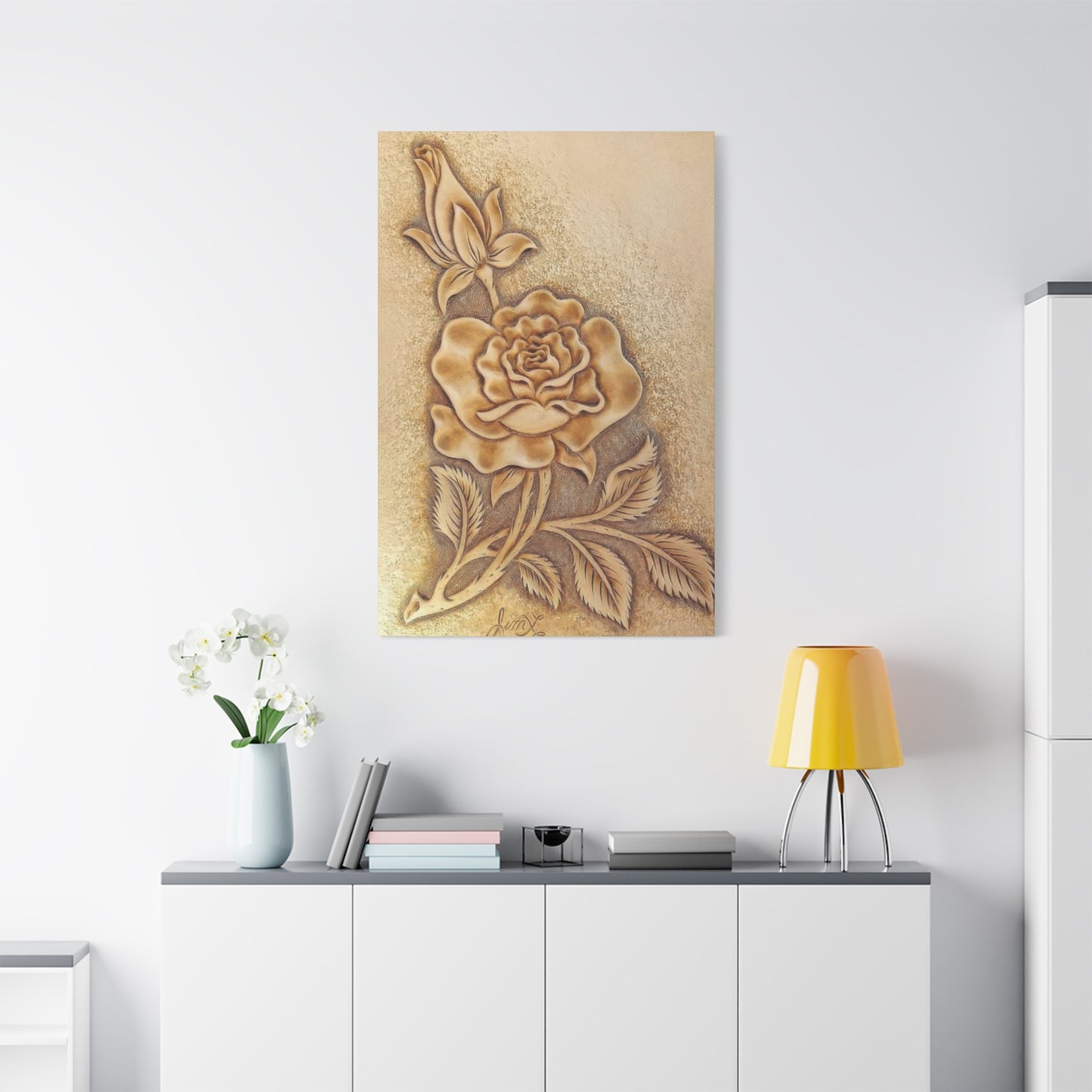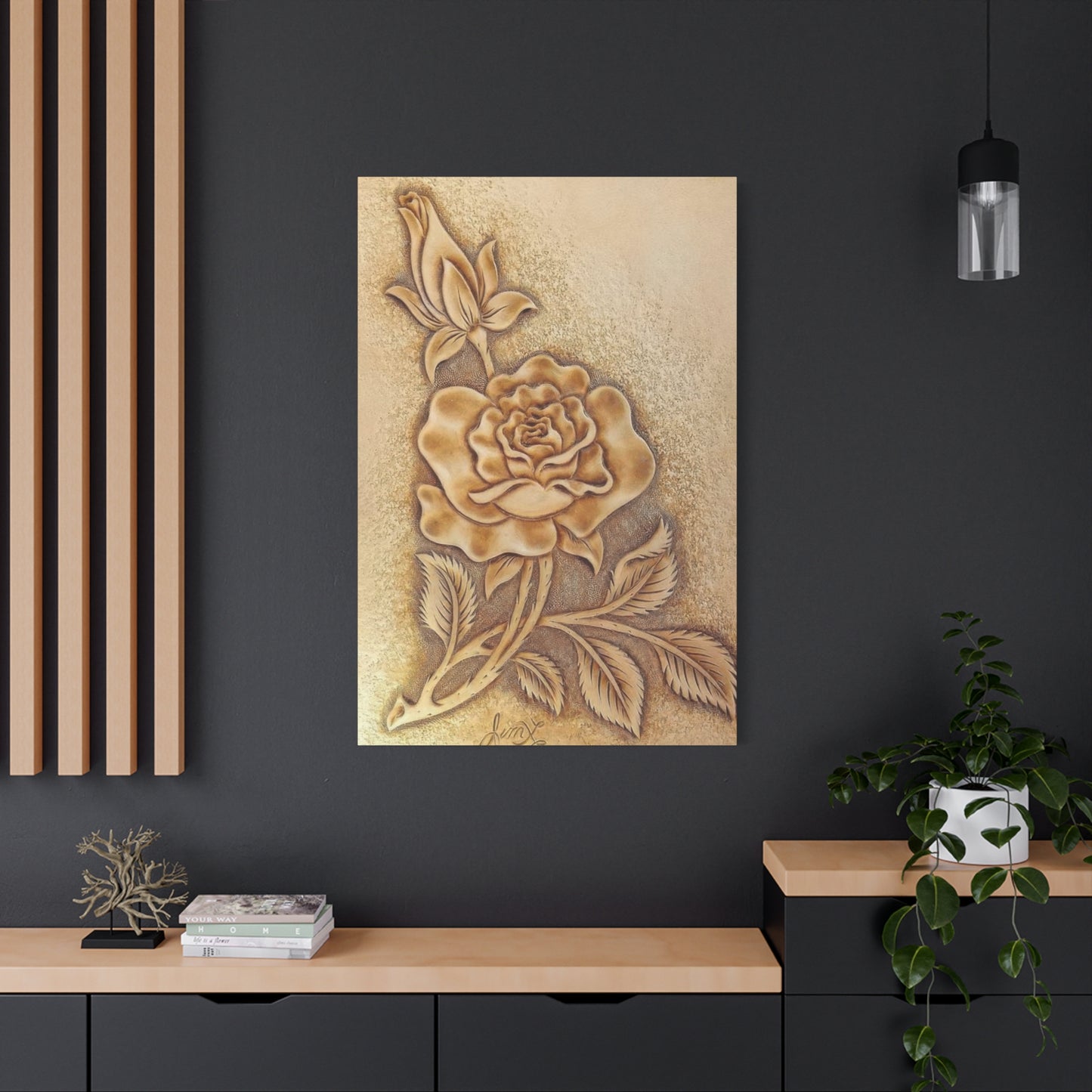Decorating with Grace: A Complete Guide to Rose Flower Leather Wall Art and Textured Elegance
The fusion of delicate floral imagery with rugged leather textures creates a captivating visual experience that has become increasingly popular in contemporary home styling. This unique combination brings together two seemingly contrasting elements to produce artwork that appeals to diverse aesthetic preferences. The rose, long celebrated as a symbol of beauty and romance, takes on an entirely new character when rendered with leather-like finishes and textures. This artistic approach transforms traditional botanical imagery into something more complex and intriguing.
When incorporating these pieces into your home, consider the overall atmosphere you wish to create. The leather texture adds depth and dimension that flat prints simply cannot achieve. This three-dimensional quality makes the artwork feel more substantial and commands attention in ways that conventional floral prints might not. The tactile appearance invites closer inspection, drawing viewers in to appreciate the intricate details of both the rose petals and the leather grain.
The versatility of this art form allows it to bridge multiple design styles seamlessly. Whether your home leans toward industrial chic, modern elegance, rustic charm, or eclectic bohemian, these pieces can find their place. The key lies in understanding how the leather element grounds the feminine softness of the roses, creating a balanced composition that feels neither too delicate nor overly masculine. This equilibrium makes such artwork particularly appealing to those who struggle to find pieces that satisfy multiple household members with different aesthetic preferences.
Consider starting with a single statement piece to gauge how this style resonates within your existing decor. Place it in a prominent location where natural light can highlight the textural variations throughout the day. The interplay of light and shadow across the leather surface adds an ever-changing quality to the artwork, ensuring it never becomes static or boring. As you become more comfortable with this aesthetic, you can gradually introduce additional pieces, building a cohesive collection that reflects your personal style evolution.
The color palette in these works typically ranges from soft blush tones to deep burgundies, often set against backgrounds that evoke aged leather in shades of brown, tan, black, or grey. This natural color scheme makes coordination with existing furnishings relatively straightforward. The organic nature of both elements means they complement rather than compete with other decorative pieces, allowing for easy integration into established room designs without requiring complete redecoration.
Soft and Edgy Floral Art
The concept of combining softness with edge represents more than just a visual trend; it reflects a broader cultural shift toward embracing complexity and nuance in aesthetic choices. Traditional floral artwork has long been associated with purely feminine or romantic styling, often relegated to specific rooms or design schemes. However, the introduction of leather elements disrupts these conventional associations, creating something more universally appealing and conceptually interesting.
This duality manifests in multiple ways throughout each piece. The organic curves of rose petals contrast beautifully with the irregular creases and worn patterns typical of leather surfaces. Where roses suggest fragility and ephemeral beauty, leather connotes durability and age. This juxtaposition creates visual tension that keeps the eye engaged, discovering new details with each viewing. The soft gradations of petal colors play against the bold, sometimes stark texture of leather, resulting in compositions that feel both harmonious and dynamic.
The edginess comes not from harsh or aggressive imagery but from the unexpected pairing of materials and the sophisticated execution of the concept. There's an inherent coolness to leather that tempers the sweetness of floral motifs, making the overall effect more contemporary and less predictable. This makes such artwork particularly suitable for those who appreciate botanical beauty but want to avoid the saccharine or overly decorative feel that sometimes accompanies traditional flower prints.
The emotional response these pieces evoke tends to be similarly complex. They can feel simultaneously romantic and rebellious, classic and cutting-edge, gentle and strong. This emotional richness adds depth to any environment, sparking conversation and contemplation. Visitors often find themselves drawn to examine these works more closely, trying to understand what makes them so compelling. The answer usually lies in this successful marriage of opposites, proving that contrast, when thoughtfully executed, creates something more powerful than either element could achieve alone.
Artists working in this style often employ various techniques to enhance the interplay between soft and edgy elements. Some use high-contrast lighting in their photography or digital rendering to emphasize texture. Others manipulate color saturation, allowing certain areas to pop while others recede into shadow. The most successful pieces maintain a delicate balance, ensuring neither element overwhelms the other. The roses remain recognizable and beautiful, while the leather texture provides context and grounding without obscuring the floral subject.
Rose Leather in Living Rooms
Living rooms serve as the central gathering point in most homes, making them ideal locations for showcasing artwork that reflects your personality and design sensibility. Incorporating rose leather pieces into these communal areas can dramatically elevate the ambiance, creating focal points that anchor the entire room's aesthetic. The living room's typically larger wall expanses provide perfect canvases for displaying these works at scales that allow their details to truly shine.
When selecting pieces for this environment, consider the room's existing color scheme and furniture arrangement. A large canvas above the sofa creates an immediate focal point, drawing the eye and establishing a visual hierarchy within the room. Choose imagery that complements your upholstery colors while providing enough contrast to stand out. If your furniture features neutral tones, a piece with more vibrant rose colors can inject energy and warmth. Conversely, if your seating already incorporates bold colors, a more subdued leather-toned piece with subtle floral elements might provide better balance.
The lighting in your living room significantly impacts how these pieces are perceived. Natural light during daytime hours will reveal different aspects of the texture and color than evening artificial lighting. Consider installing picture lights or adjusting existing fixtures to ensure your artwork receives appropriate illumination throughout the day. The leather texture particularly benefits from angled lighting that creates shadows and highlights across its surface, enhancing the three-dimensional appearance and making the piece more dynamic.
Furniture placement should work in concert with your artwork rather than against it. Ensure sofas and chairs are positioned to allow comfortable viewing distances, typically between eight and ten feet for medium to large pieces. This distance allows viewers to appreciate both the overall composition and the intricate details without needing to move around the room. Side tables, floor lamps, and other accessories should complement rather than compete with the artwork, maintaining visual harmony throughout the environment.
Consider creating a cohesive look by echoing elements from your rose leather pieces in other decorative accessories. Throw pillows incorporating similar colors, leather-bound books on coffee tables, or even fresh roses in a vase can create subtle connections that tie the room together. However, avoid being too literal or matchy-matchy; the goal is to create resonance, not redundancy. The artwork should feel integrated into the overall design scheme while still commanding attention as a standout feature.
The psychological impact of having these pieces in your living room should not be underestimated. The combination of natural beauty and sophisticated texture creates an environment that feels both welcoming and refined. Guests will perceive attention to detail and thoughtful curation, while family members benefit from living in surroundings that stimulate visual interest and provide aesthetic pleasure. Over time, these pieces become part of the home's character, contributing to the memories and experiences that occur within the room.
Office Decor: Rose Leather Prints
Professional environments benefit enormously from thoughtfully selected artwork that enhances productivity while maintaining appropriate aesthetic standards. Rose leather prints offer a perfect solution for office settings, providing visual interest without the distraction of overly busy or controversial imagery. The sophisticated nature of these pieces conveys professionalism while the organic subject matter introduces warmth and humanity into what might otherwise feel like sterile work environments.
In home offices, where personal preference plays a larger role than in corporate settings, these prints can help establish the room's character and separate it psychologically from the rest of the residence. This distinction proves valuable for those who work remotely, as it helps create mental boundaries between professional and personal life. A well-chosen piece positioned within the line of sight during video calls also contributes to how others perceive your professional brand, suggesting someone with refined taste and attention to environmental quality.
Corporate offices require more careful consideration of audience and context. Conference rooms benefit from larger statement pieces that provide visual interest during long meetings without being so captivating that they distract from discussions. The neutral color palettes typical of leather-toned backgrounds make these works particularly suitable for professional settings, as they coordinate easily with standard office furniture and finishes. Meanwhile, the floral element prevents the environment from feeling too austere or impersonal.
Private offices for executives or professionals with their own dedicated workspaces can incorporate more personal selections. Here, the choice of rose leather prints can reflect individual taste while still maintaining professional appropriateness. The texture and complexity of these pieces provide something visually engaging during moments of contemplation or when taking brief mental breaks from intensive work. Studies have shown that having access to visual beauty and nature imagery, even in stylized form, can reduce stress and improve cognitive function.
Placement considerations in office settings differ somewhat from residential applications. Avoid positioning artwork where glare from windows or overhead lighting creates viewing difficulties. In offices with computer monitors, place prints at angles that provide visual relief when looking away from screens, encouraging healthy eye breaks. Reception areas benefit from welcoming pieces positioned at eye level for seated visitors, creating positive first impressions and reducing anxiety for those waiting for appointments.
The durability considerations of canvas prints make them particularly suitable for office environments where climate control might be less precise than in homes. Unlike original paintings or certain types of photographs, properly produced canvas prints withstand temperature fluctuations and varying humidity levels without degrading. This resilience ensures your investment maintains its appearance over years of daily viewing, providing consistent aesthetic value without requiring special maintenance or climate monitoring.
Frames for Leather Pattern Art
The framing choices you make dramatically impact how rose leather artwork integrates into your surroundings and how viewers perceive the pieces. Frames serve multiple practical and aesthetic functions, protecting the artwork while also providing visual definition and enhancing or complementing the imagery. Given the textural nature of leather-patterned prints and the organic subject matter of roses, frame selection requires careful consideration of materials, colors, and styles that honor both elements.
Wood frames offer natural warmth that resonates beautifully with both leather textures and floral subjects. Dark woods like walnut or espresso provide rich contrast that makes lighter rose tones pop while complementing deeper leather backgrounds. Lighter woods such as oak or maple create a more casual, accessible feel, perfect for relaxed residential settings or creative office environments. The grain patterns in wood create their own subtle texture that dialogues with the leather appearance in the artwork without competing for attention.
Metal frames introduce a more contemporary or industrial aesthetic that emphasizes the edgier aspects of leather-textured pieces. Black metal frames create bold definition and modern sophistication, while brushed nickel or gold tones add elegance and warmth. The clean lines of metal framing allow the artwork itself to take center stage, providing structure without distraction. This approach works particularly well in modern or minimalist settings where ornate frames would feel out of place.
The decision between framed and frameless presentations depends largely on your existing decor and the specific artwork. Gallery-wrapped canvases, where the image extends around the edges, can be displayed without frames for a clean, contemporary look. This approach works best when the artwork itself has sufficient visual weight and definition to stand alone. However, adding a floating frame, which creates a small gap between the canvas edge and frame, provides structure while maintaining a modern aesthetic.
Consider the mat or spacing between artwork and frame, if applicable. While not always necessary with canvas prints, a subtle mat in a complementary neutral tone can provide breathing room around the image, preventing it from feeling cramped within its frame. The mat color should enhance rather than distract, typically choosing shades that appear within the artwork itself or neutral tones that bridge the piece with surrounding walls.
Frame width and profile also merit attention. Thicker, more substantial frames make bold statements and work well with larger pieces or in rooms with strong architectural features. Slimmer profiles create a more refined, understated presentation suitable for smaller works or minimalist environments. The profile shape, whether flat, stepped, or ornately carved, should align with your overall design aesthetic and the character of the artwork itself.
Layering Rose Leather Textures
Creating depth and visual interest in a room often involves thoughtful layering of textures, colors, and patterns. Rose leather artwork provides an excellent anchor for this design approach, as it already combines multiple textural elements within a single piece. Building upon this foundation by incorporating complementary textures throughout the room creates a rich, sophisticated environment that engages multiple senses and maintains visual interest.
Begin by identifying the textural qualities present in your artwork. The smooth or crinkled appearance of leather, the delicate gradations of rose petals, and any background elements all contribute distinct tactile suggestions. Your goal is to echo these textures in three-dimensional objects throughout the room without creating redundancy. If your artwork features smooth, polished leather tones, consider incorporating actual leather furniture pieces, such as a chair or ottoman, in similar or complementing shades. This creates visual continuity while the tangible texture adds real-world substance to the suggestion in the artwork.
Fabric selections offer numerous opportunities for textural layering. Velvet cushions or throws introduce softness that resonates with rose petals while providing luxurious contrast to leather elements. Linen or cotton in natural, slightly rough weaves can echo the organic quality of both roses and aged leather. Avoid overly synthetic or shiny fabrics that might clash with the natural authenticity suggested by your artwork. Instead, choose materials with inherent character and subtle imperfections that contribute to an overall sense of collected, curated style.
Rugs provide another significant opportunity for textural contribution. A distressed or vintage-appearance rug with irregular patterns can mirror the weathered quality of leather textures, while a plush, high-pile rug might echo the softness implied by rose petals. Consider how foot traffic patterns will interact with your rug choice, ensuring durability appropriate to the room's function. The colors in your rug should coordinate with those in your artwork, pulling out accent tones and creating color continuity across horizontal and vertical surfaces.
Wood elements, whether in furniture, flooring, or decorative objects, add warmth and another layer of natural texture. The grain patterns in wood create visual movement similar to leather creasing, while the organic origin connects with the botanical subject matter. Reclaimed or distressed wood pieces particularly complement the aged, characterful appearance of leather-textured artwork, suggesting history and authenticity throughout the environment.
Metal accents can provide textural contrast that highlights the organic elements in your design scheme. Brushed or hammered metal finishes introduce industrial coolness that balances the warmth of leather and floral imagery. These might appear in light fixtures, picture frames, decorative bowls, or furniture legs. The key is maintaining proportion; metal should accent rather than dominate, preventing the room from feeling cold or overly industrial.
Where to Buy Rose Leather Art
Acquiring high-quality rose leather artwork requires knowing where to look and what to evaluate when making purchasing decisions. The marketplace for this specialized art form has expanded considerably as its popularity has grown, offering options from mass-produced prints to exclusive limited editions. Understanding the landscape helps ensure you invest in pieces that provide lasting satisfaction and appropriate value for your budget.
Online marketplaces provide convenient access to extensive selections from artists and retailers worldwide. Platforms specializing in artwork and home decor offer filtering options that allow you to narrow choices by size, color palette, price range, and style. When shopping online, pay careful attention to product descriptions, dimensions, and customer reviews. Look for detailed information about printing methods, canvas quality, and whether pieces arrive ready to hang or require additional framing. High-resolution preview images that show texture details help gauge quality before purchasing.
Artist-direct purchases often provide the best combination of quality and value while directly supporting creative professionals. Many artists maintain websites showcasing their portfolios and offering prints in various sizes. Buying directly eliminates intermediary markups while often providing customization options regarding size, orientation, or even personalized variations on existing designs. Additionally, artists can typically answer specific questions about their work, printing processes, and best practices for display and care.
Gallery exhibitions, whether physical or virtual, curate collections that meet specific quality standards, providing assurance that you're considering worthwhile pieces. While gallery pieces typically command higher prices, this premium often reflects superior artistry, limited availability, or enhanced reproduction quality. Galleries frequently host opening events where you can view works in person, meet artists, and gain deeper understanding of the creative vision behind pieces that interest you.
Home decor retailers, both chains and independent boutiques, increasingly stock rose leather prints alongside other trending artwork styles. Shopping at physical retail locations offers the advantage of seeing pieces in person before purchasing, allowing you to assess color accuracy, texture reproduction quality, and overall impact. Retail staff can often provide insights into current trends, help with size selection, and offer delivery or installation services.
Custom printing services allow you to source specific images and have them reproduced to your exact specifications. This approach works well if you've found particular rose leather imagery you love but cannot locate in a format suitable for your needs. Research printing companies carefully, reading reviews and requesting samples when possible. Quality varies significantly based on printer technology, canvas materials, and finishing techniques. Premium services may cost more initially but deliver results that justify the investment through superior longevity and appearance.
Trade shows and art fairs provide opportunities to discover emerging artists and unique pieces unlikely to appear in mainstream retail channels. These events typically occur seasonally in major cities and attract vendors from across regions or countries. The concentrated variety allows for comparison shopping and often presents opportunities for negotiation, particularly late in events when vendors prefer making sales to transporting inventory home.
Bold Colors in Rose Leather Prints
While rose leather artwork often features relatively naturalistic color palettes, many contemporary artists push boundaries by introducing bold, unexpected hues that transform these pieces from subtle accents into commanding focal points. Understanding how to incorporate and style these more vibrant interpretations requires confidence and careful consideration of overall room design, but the results can be spectacular when executed successfully.
Bold reds present an obvious but powerful choice for rose imagery, intensifying the flower's natural color to create dramatic impact. Deep, saturated reds evoke passion and energy, making them ideal for dining rooms or entertainment areas where you want to stimulate conversation and activity. When paired with black leather textures, red roses create high contrast that commands immediate attention. This combination works particularly well in modern or contemporary settings where graphic impact is valued. However, balance is essential; a room with bold red artwork requires restraint elsewhere to avoid overwhelming the senses.
Vibrant pinks ranging from hot magenta to electric fuchsia bring youthful energy and contemporary edge to rose leather compositions. These shades work beautifully in creative workspaces, dressing areas, or any environment where you want to inspire creativity and positive emotions. Against grey or charcoal leather backgrounds, bright pinks create striking contrast without the heaviness that can accompany red. This combination feels fresh and current while maintaining sophistication through the leather element's grounding effect.
Unexpected color choices like deep purple, rich orange, or even blue-tinted roses create truly unique pieces that challenge expectations and showcase artistic innovation. Purple roses against brown leather evoke luxury and mystery, suitable for sophisticated bedroom settings or intimate lounges. Orange roses bring warmth and optimism, complementing autumn-inspired decor schemes or adding unexpected punch to neutral environments. Blue-tinted roses create surreal, dreamlike qualities that appeal to those seeking artwork that transcends mere decoration to become conversation-starting art.
Metallic accents in gold, silver, or copper add another dimension to bold color choices, catching light and creating dynamic visual interest. A rose rendered in gold tones against black leather makes a glamorous statement appropriate for formal dining rooms or elegant entryways. Silver creates cooler sophistication, while copper introduces warmth with industrial edge. These metallic treatments work particularly well in rooms with complementary metal finishes in lighting fixtures, hardware, or decorative accessories.
Multi-colored pieces featuring roses in various hues create eclectic, energetic compositions that work well in bohemian or maximalist decor schemes. These might show different rose varieties in their natural colors or take a more abstract approach with artistic color manipulation. When selecting multi-colored pieces, ensure your room can accommodate such visual complexity. These works typically function best as the primary visual focus, with surrounding elements kept relatively simple to avoid chaotic overcrowding.
Minimalist Rose Leather Art
Minimalism as a design philosophy emphasizes restraint, intentionality, and the elimination of excess, creating environments characterized by clean lines, limited color palettes, and careful curation. Rose leather artwork adapted to minimalist principles offers a fascinating study in reduction, where artists distill the essential qualities of both roses and leather textures into their purest expressions. These pieces prove that minimalism need not be cold or sterile; organic elements rendered with restraint create warmth within simplicity.
The most effective minimalist rose leather pieces typically feature single blooms or even partial flowers rather than abundant arrangements. This singular focus creates immediate visual clarity and allows viewers to appreciate subtle details that might be lost in more complex compositions. A single rose, perhaps shown in profile or from above, commands attention through its isolation. The leather texture might appear as a simple, unfussy background in neutral tones, or it might be reduced to suggestion through selective textural elements in specific areas.
Color palettes in minimalist approaches tend toward monochromatic or strictly limited schemes. A rose rendered entirely in shades of grey against a black leather background creates dramatic simplicity. Alternatively, a white or cream rose against pale leather tones offers serene, meditative quality. Some artists introduce a single accent color, perhaps a touch of blush pink in an otherwise neutral composition, creating a focal point that draws the eye without overwhelming the sense of restraint.
Negative area plays a crucial role in minimalist compositions, with significant portions of the canvas left intentionally simple or empty. This breathing room prevents visual clutter and creates a sense of calm. The leather texture might occupy only a portion of the canvas, fading into solid color or simply stopping, allowing blank canvas to complete the composition. This approach requires confidence in what to leave out, understanding that emptiness contributes as much to the overall impact as any rendered element.
Line quality and edge definition in minimalist rose leather pieces tend toward clean precision rather than soft, romantic blending. Sharp contrasts between rose and background, or between different tonal areas, create graphic quality that aligns with minimalist aesthetics. However, the leather texture adds essential warmth that prevents these works from feeling too stark or digitally cold. This texture becomes even more important in minimalist approaches, as it carries much of the visual interest in compositions with limited color and form.
Framing and presentation of minimalist rose leather pieces should continue the design philosophy. Simple, slim frames in matte black or natural wood allow the artwork to speak without distraction. Alternatively, frameless presentation with clean gallery wrapping emphasizes the piece's essential qualities. Placement on uncluttered walls with generous surrounding emptiness allows these works to achieve maximum impact through their quiet confidence.
Caring for Leather Canvas Prints
Proper maintenance ensures your rose leather artwork maintains its visual appeal and structural integrity for years or even decades. Canvas prints, while generally durable, require specific care approaches different from those used with traditional paintings or photographs behind glass. Understanding these needs helps protect your investment and preserve the aesthetic qualities that attracted you to the piece initially.
Dusting represents the most frequent maintenance task for canvas prints. Use a soft, clean microfiber cloth or a specialized art duster with gentle, sweeping motions across the canvas surface. Avoid pressing hard or scrubbing, as this can damage the printed surface or push dust particles into the canvas weave. Perform this light cleaning every few weeks or monthly, depending on your environment's dust levels. Homes with pets, high traffic, or open windows may require more frequent attention.
Avoid hanging canvas prints in locations with extreme conditions. Direct sunlight, while it may beautifully illuminate your artwork during certain hours, causes fading over time, particularly affecting vibrant colors. If your preferred location receives strong sun exposure, consider UV-protective glass framing or window treatments that filter harmful rays during peak hours. Similarly, avoid placement directly above heat sources like radiators or fireplaces, as excessive heat can cause canvas to become brittle or protective coatings to crack.
Humidity presents another environmental concern. Bathrooms and kitchens, while sometimes ideal from a design perspective, expose artwork to moisture that can encourage mold growth or cause canvas to warp and sag. If you must display pieces in these higher-humidity areas, ensure adequate ventilation and consider running dehumidifiers during particularly humid seasons. Alternatively, look for canvas prints specifically treated with moisture-resistant coatings when planning bathroom or kitchen installations.
For more thorough cleaning when dust buildup or light soiling occurs, slightly dampen your microfiber cloth with water only, wring it thoroughly to remove excess moisture, and gently wipe the canvas surface. Never use cleaning products, soaps, or chemicals unless specifically recommended by the manufacturer, as these can damage protective coatings or cause discoloration. Always test any cleaning approach on an inconspicuous corner first if you have any uncertainty about how the canvas will react.
Handle canvas prints carefully during any relocation or cleaning. Always lift and carry from the frame rather than touching the canvas surface directly. Oils from fingers can leave marks or gradually degrade protective coatings. If your print is frameless with gallery wrapping, hold it by the edges where the canvas wraps around the stretcher bars. Never roll or fold canvas prints, as this creates permanent creases and may crack any surface coatings.
Professional cleaning and restoration services exist for valuable or particularly beloved pieces that have suffered damage or significant soiling beyond what home care can address. These specialists have training in art conservation techniques and access to materials appropriate for various types of canvas prints. While professional intervention costs more than basic home maintenance, it can save pieces that might otherwise be considered damaged beyond use.
Gift Ideas: Rose Leather Art
Selecting artwork as a gift demonstrates thoughtfulness and consideration, particularly when the piece reflects the recipient's aesthetic preferences or life circumstances. Rose leather prints offer versatile gifting options suitable for various occasions, relationships, and budgets. Understanding how to choose and present these gifts ensures your gesture will be appreciated and treasured.
Housewarming presents an ideal occasion for gifting artwork, as new homeowners often need pieces to personalize their environment. A medium-sized rose leather print provides substantial visual impact without overwhelming spaces that may still be in decorating flux. Consider neutral color palettes that coordinate with various design schemes, allowing recipients flexibility in placement. Include a thoughtful note explaining what drew you to the piece and perhaps suggesting potential room placements based on your knowledge of their new home.
Wedding gifts traditionally include items for the couple's shared household. Rose leather artwork works beautifully here, as the combination of romantic floral imagery with sophisticated leather texture appeals across gender preferences. Choose pieces with colors that complement information you have about their decor plans, or select versatile neutral-toned works. Consider purchasing two complementary pieces that can be hung as a pair, creating a cohesive look while providing more design flexibility than a single large work.
Anniversary celebrations, particularly milestone years, merit special gifts that honor the enduring nature of the relationship. Rose leather artwork carries symbolic weight here, with roses representing love and leather suggesting durability and timeless appeal. Research suggests traditional and modern anniversary gift themes for each year; leather is actually the traditional third-anniversary gift, making these pieces particularly appropriate for that milestone. Select pieces with rich, mature color palettes that reflect the depth of a long-term relationship.
Retirement gifts often focus on items the recipient can enjoy in their next life chapter. Many retirees finally have time to focus on personalizing their living environments according to their own preferences rather than practical family needs. Rose leather artwork suitable for a home office, reading nook, or other personal retreat shows you understand this transition and want to contribute to their enjoyment of this new phase.
Birthday gifts in the form of artwork show you've paid attention to the recipient's tastes and interests. Someone who appreciates both natural beauty and contemporary design will likely treasure rose leather pieces. Consider the recipient's existing decor when selecting colors and sizes. If you're uncertain about their preferences or available wall areas, gift certificates to reputable galleries or online art retailers allow them to choose pieces that perfectly suit their needs while still showing your intention to give something meaningful.
Host or hostess gifts when invited to someone's home can include smaller rose leather prints as elevated alternatives to traditional wine or flowers. These lasting tokens show appreciation beyond consumable items. Select sophisticated pieces with understated elegance rather than bold statement works, as you want to honor their hospitality without presuming to make major decorative decisions for their home.
Mixing Floral and Leather Art
Creating a cohesive art collection that includes rose leather pieces alongside other artwork requires understanding principles of repetition, variation, and visual conversation. The goal is achieving a curated appearance where individual pieces relate to each other without redundancy, creating an environment that feels intentionally designed rather than randomly assembled. Successful mixing enhances the impact of all pieces involved while reflecting sophisticated aesthetic sensibility.
Begin by identifying common elements across your artwork collection. Rose leather pieces already combine floral and textural components, providing natural bridges to other work. You might include purely floral pieces without leather elements, creating visual conversation through subject matter while introducing variety through treatment. Alternatively, include other leather-textured works featuring different subjects, maintaining textural continuity while expanding thematic range. The key is ensuring some connecting thread while avoiding repetition that makes your collection feel limited or monotonous.
Color coordination helps unify diverse pieces into a cohesive collection. Extract two or three key colors from your rose leather artwork and ensure these appear in other pieces, even if in different proportions or contexts. This creates visual rhythm that guides the eye from piece to piece throughout a room or across multiple rooms. However, perfect color matching is neither necessary nor desirable; slight variations in shade and tone add interest while maintaining overall harmony.
Scale variation prevents monotony in multi-piece arrangements. If your primary rose leather work is large and commanding, complement it with smaller pieces in different styles or subjects. This creates visual hierarchy and ensures the space doesn't feel cluttered or overly symmetrical. Alternatively, groupings of smaller works can balance a single large piece on an opposite wall, creating equilibrium within the room.
Subject matter connections beyond the obvious can create sophisticated visual dialogues. Rose leather pieces might be paired with abstract works that echo their color palettes or with geometric compositions that provide contrast while sharing tonal qualities. Photography featuring architectural details with interesting textures complements the leather element. The goal is creating relationships that reward attention without being so obvious that they feel contrived.
Frame consistency or intentional frame variation both represent valid approaches to unifying diverse artwork. Matching frames create strong visual connection and work well in formal settings or when pieces vary significantly in style or subject matter. The consistent framing provides structure that contains diversity. Conversely, varied frames can work beautifully when the artwork itself shares sufficient common elements. This approach feels more collected and personal, suggesting pieces acquired over time rather than purchased as a coordinated set.
Rose Leather Art Trends
The evolution of rose leather artwork reflects broader movements in home styling, artistic practice, and cultural aesthetics. Understanding current trends helps inform purchasing decisions while recognizing that the most enduring pieces often transcend temporary fashions. Awareness of directional movements in this art form allows you to make choices that feel current without being so trend-dependent that they'll appear dated in a few years.
Oversized statement pieces continue growing in popularity as homeowners increasingly view artwork as central design elements rather than afterthought accessories. Large-scale rose leather canvases that dominate walls create dramatic impact and anchor entire room designs. This trend reflects growing confidence in making bold decorative choices and willingness to invest in quality pieces that truly transform environments. The combination of substantial size with the sophisticated rose leather aesthetic creates works that feel important and valuable, justifying their prominent placement and often significant cost.
Mixed-media approaches that combine traditional printing with actual leather elements or three-dimensional components represent cutting-edge innovation in this art form. Some artists are incorporating real leather pieces into their compositions, creating texture that extends beyond visual suggestion into tactile reality. Others experiment with layering printed images over textured substrates or adding metallic foils and other dimensional elements. These experimental works appeal to collectors seeking unique pieces that push boundaries while maintaining connection to the core rose leather aesthetic.
Sustainable and eco-conscious production methods increasingly influence purchasing decisions across all consumer goods categories, including artwork. Artists and manufacturers responding to this trend emphasize vegetable-tanned leather imagery, recycled canvas materials, water-based inks, and local production that reduces transportation impacts. Marketing now often highlights these considerations, and consumers actively seek information about production practices before purchasing. This trend likely represents permanent rather than temporary shift as environmental awareness continues growing globally.
Customization and personalization services have become more accessible as digital printing technology advances. Consumers can now commission custom colorways, request specific size variations, or even have artists create entirely unique rose leather pieces reflecting their exact specifications. This trend toward personalization reflects broader cultural movements away from mass-produced uniformity toward individual expression and ownership of unique items that feel specifically created for particular people and environments.
Digital and augmented reality integration is beginning to appear in artwork sales processes, allowing potential buyers to preview how pieces will appear in their actual rooms before purchasing. Apps and websites now offer features where you photograph your wall and digitally place artwork at true scale, solving the longstanding challenge of visualizing appropriately-sized pieces for available areas. While not yet universal, this technology is rapidly becoming standard among progressive retailers and will likely be expected across the industry within a few years.
Using Rose Leather in Bedrooms
Bedrooms serve as personal sanctuaries where we begin and end each day, making the artwork we choose for these intimate environments particularly significant. Rose leather pieces offer ideal bedroom options, combining the romantic associations of roses with sophisticated textures that prevent the room from feeling overly sweet or juvenile. Creating bedroom environments that promote relaxation while reflecting personal style requires thoughtful artwork selection and placement.
Over-the-bed placement represents the most traditional and often most effective location for bedroom artwork. A single large piece or a grouping of two or three complementary works hung above the headboard creates a natural focal point and adds visual weight to the bed as the room's central feature. When selecting pieces for this location, consider the headboard height and width, ensuring artwork complements rather than competes with the bed's proportions. The piece should be wide enough to relate to the bed width, typically at least two-thirds as wide as the headboard.
Color selection for bedroom rose leather pieces significantly impacts the room's mood and atmosphere. Soft, muted tones promote relaxation and restful sleep, making them ideal for primary bedrooms where restoration is the main priority. Blush pinks, dusty roses, and warm beiges in the roses combined with gentle brown or grey leather backgrounds create soothing environments. Deeper, more saturated colors work well in bedrooms used primarily during waking hours or where you want to create more dramatic, luxurious ambiance.
Bedside walls offer alternative or additional placement options for rose leather artwork. Hanging pieces flanking the bed creates symmetry and frames the sleeping area visually. This approach works particularly well with matching or complementary pairs that create unified composition while being viewed separately. Ensure these side pieces don't extend beyond the bed's edges, as this can make the room feel cramped or visually unbalanced.
Opposite-wall placement, where artwork hangs on the wall you face while lying in bed, provides visual engagement during wakeful moments and creates opportunity for contemplation before sleep or upon waking. Choose pieces with calming, meditative qualities rather than intense or busy compositions. The rose leather aesthetic naturally lends itself to this placement, as the organic subject matter and natural textures promote peaceful reflection rather than stimulation or stress.
Dressing areas within bedrooms benefit from artwork that energizes and inspires. Slightly bolder rose leather pieces with stronger colors or more dramatic compositions work well here, creating an environment that motivates and uplifts as you prepare for the day. Position artwork at eye level when standing at your dresser or vanity, ensuring comfortable viewing while you ready yourself for daily activities.
Statement Pieces: Rose Leather Art
Statement artwork serves as the dominant visual element within a room, immediately capturing attention and often influencing other decorative decisions. Rose leather pieces scaled and styled to function as statements require confident selection and presentation, but the results justify the boldness, creating environments with clear visual identity and memorable impact. Understanding what makes particular pieces function as statements helps in both selection and styling.
Size represents the most obvious factor in statement potential. Large-scale works, typically measuring at least 40 by 60 inches or larger, command attention through sheer physical presence. At these dimensions, the details in rose leather imagery become truly appreciable, with individual petals and leather texture variations clearly visible from across rooms. However, size alone doesn't guarantee statement impact; the piece must also have sufficient visual interest and compositional strength to justify its scale.
Final Thoughts:
Decorating a space goes beyond simply filling walls — it’s about telling a story, evoking emotion, and creating a sense of harmony. Rose flower leather wall art captures all of these elements with quiet sophistication. It blends the organic beauty of nature with the tactile richness of texture, bringing depth and warmth to any room. Whether you’re designing a cozy corner or curating a statement wall, the elegance of rose-inspired leather artwork offers a timeless aesthetic that elevates the entire space.
Throughout this guide, we’ve explored the unique qualities that make leather wall art such a compelling decor choice. From the softness of hand-crafted petals to the durability of leather as a medium, it’s clear that this form of art balances both form and function. Texture plays a key role in modern interiors, and few pieces add tactile allure as gracefully as embossed or sculpted floral leather.
What truly sets rose flower leather wall art apart is its versatility. Whether your interior leans toward minimalism, rustic charm, vintage glamour, or contemporary chic, these pieces adapt seamlessly while adding an air of romance and sophistication. Their ability to reflect light, add dimension, and serve as both focal points and subtle accents makes them a worthy investment for any design lover.
As with any artistic element, placement and scale matter. Don’t be afraid to experiment — let your instincts guide you. Group smaller pieces for a gallery-style effect or allow one large, stunning rose panel to anchor a room. Complement these with neutral tones, natural materials, or metallics for contrast, and you’ll create a layered, curated environment that feels intentional and inspired.
But perhaps the most powerful element of rose leather wall art lies in its symbolism. Roses are long associated with grace, love, and transformation — qualities that resonate deeply within a home. By choosing this form of wall decor, you’re not just enhancing your aesthetic — you’re bringing meaning and mindfulness into your environment.
In closing, decorating with grace isn’t just about beauty — it’s about choosing pieces that reflect who you are and what you value. Rose flower leather wall art is more than decor; it’s an artistic expression that invites calm, creativity, and charm into your living space. Let your walls speak with elegance, and let every texture tell a story.

















